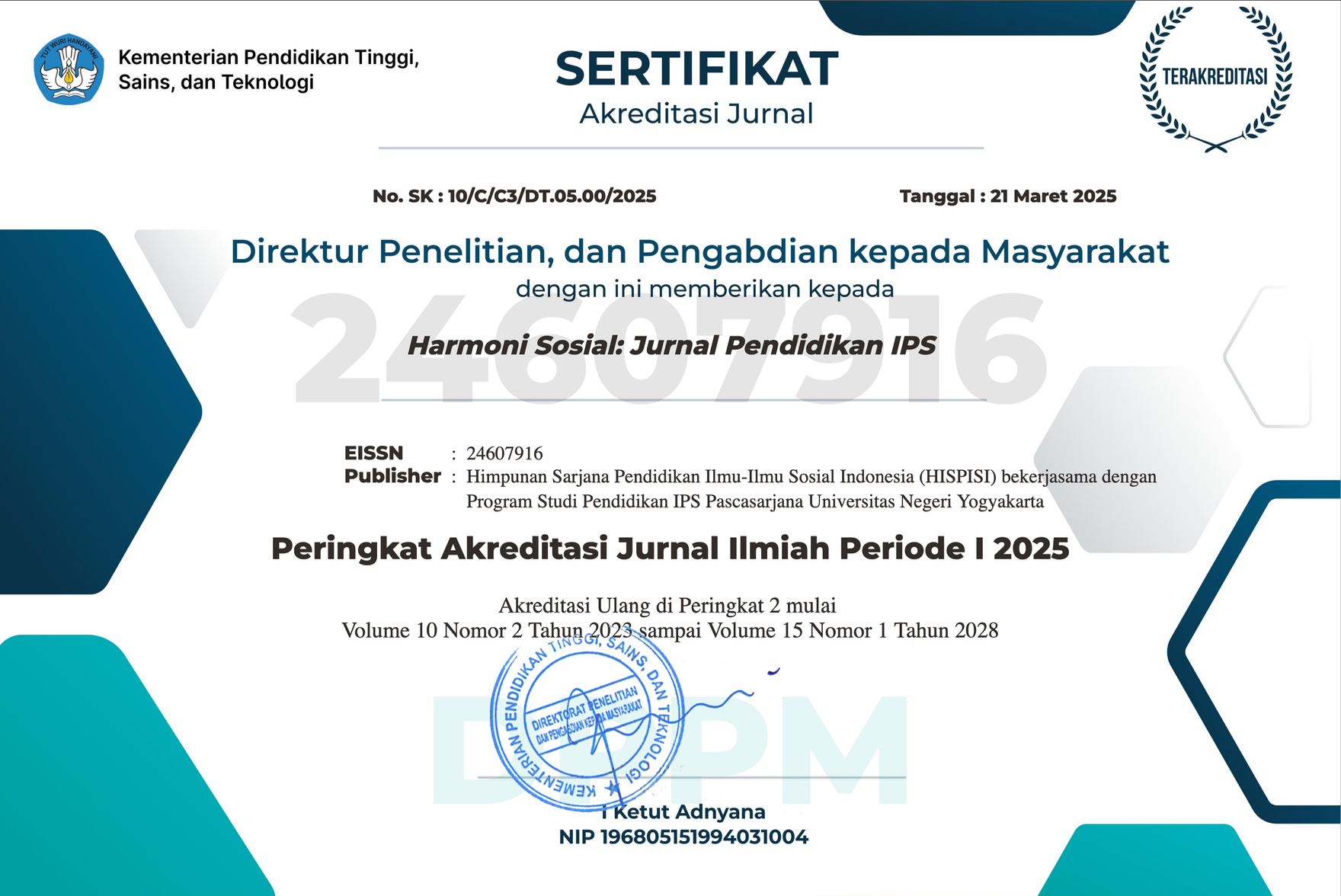A Comparative study in character education management models in Indonesia and India
Downloads
Downloads
Akbar, A. I. (2009). Praktik pendidikan di Indonesia. Jakarta: Puspa Warna.
Arokiasamy, A. R. A. (2011). An Analysis of globalization and higher education in Malaysia. Online Submission.
Badan Penelitian dan Pengembangan Kementerian Pendidikan Nasional Republik Indonesia. (2010). Pengembangan pendidikan budaya dan karakter bangsa. Kementerian Pendidikan Nasional Republik Indonesia. Retrieved from http://new-indonesia.org/beranda/images/upload/dok/kurikulum/pengembangan-pendidikan-budaya-dan-karakter-bangsa.pdf
Baehr, J. (2017). The varieties of character and some implications for character education. Journal of youth and adolescence, 46(6), 1153-1161. doi: https://doi.org/10.1007/s10964-017-0654-z
Bamford, J., Djebbour, Y., & Pollard, L. (2015). I'll do this no matter if I have to fight the world!. Journal for Multicultural Education, 9(3), 140-158. doi: http://doi.org/10.1108/JME-05-2015-0013
Brown, A., & Green, T. D. (2006). The essentials of instructional design "˜connecting fundamental principles with process and practice. New Jersey: Pearson Prentice Hall.
Bryan, C. S., & Babelay, A. M. (2009). Building character: A model for reflective practice. Academic Medicine, 84(9), 1283-1288. doi: https://doi.org/10.1097/ACM.0b013e3181b6a79c
Degand, D. (2020). Introducing critical race media literacy in an undergraduate education course about technology and arts-based inquiry. International Journal of Multikultural Education, 22(3), 96-117. doi: http://dx.doi.org/10.18251/ijme.v22i3.2461.
Elkins, D. N. (2009). Why humanistic psychology lost its power and influence in American psychology: Implications for advancing humanistic psychology. Journal of Humanistic Psychology, 49(3), 267-291. doi: https://doi.org/10.1177/0022167808323575
Gao, J. (2020). Asian American student's perceptions of social studies. International Journal of Multikultural Education, 22(3), 76-95. doi: http://dx.doi.org/10.18251/ijme.v22i3.2515
Ghazali, A. (2010). Paduan akhlak dan hati. Jakarta: Ghalia.
Handoko, T. H. (1995). Manajemen (2nd ed). Yogyakarta: BPFE UGM.
Hosseini, A. S. (2014). The effect of creativity model for creativity development in teachers. International Journal of Information and Education Technology, 4(2), 138-142. doi: https://doi.org/10.7763/IJIET.2014.V4.385
Kartodirdjo, S. (2005). Sejak Indische sampai Indonesia. Penerbit Buku Kompas.
Keith, S., & Girling, R. H. (1991). Education, management, and participation: New directions in educational administration. Allyn & Bacon.
Kementerian Pendidikan Nasional Republik Indonesia. (2010). Grand design pendidikan karakter. Jakarta: Kemendiknas.
Lickona, T. (2009). Educating for character: How our schools can teach respect and responsibility. Bantam.
Lickona, T. (1997). The teacher's role in character education. Journal of education, 179(2), 63-80. doi: https://doi.org/10.1177/002205749717900206
Moorhead, G., & Griffin, R. W. (2008). Organizational behavior managing people and organizations. Dreamtech Press.
Nurdin, E. S. (2015). The policies on civic education in developing national character in Indonesia. International Education Studies, 8(8), 199-209. doi: https://doi.org/10.5539/ies.v8n8p199
í–zturgut, O. (2011). Understanding multikultural education. Current Issues in Education, 14(2), 1-11. Retrieved from http://cie.asu.edu/ojs/index.php/cieatasu/article/download/732/225
Puspitasari, L., In'am, A., & Syaifuddin, M. (2018). Analysis of students' creative thinking in solving arithmetic problems. International Electronic Journal of Mathematics Education, 14(1), 49-60. doi: https://doi.org/10.12973/iejme/3962
Presiden Republik Indonesia. (2003). Undang-Undang Republik Indnesia Nomor 20 Tahun 2003 tentang Sistem Pendidikan Nasional.
Ryan, K., & Bohlin, K. E. (1999). Building character in schools: Practical ways to bring moral instruction to life. San Fransisco: Jossey-Bass Inc.
Sanderse, W. (2013). The meaning of role modelling in moral and character education. Journal of Moral Education, 42(1), 28-42. doi: https://doi.org/10.1080/03057240.2012.690727
Shapira, N., Kali, Y., Kupermintz, H., & Dolev, N. (2020). Teachers foster intergroup empathy. International Journal of Multicultural Education, 22(3), 1-23. doi: http://dx.doi.org/10.18251/ijme.v22i3.2225
Sharma, S. L. (2009). Educational management: A unified approach of education. Global India Publications.
Terry, G. R. (2012). Principles of management: Irwin series in industrial engineering and management. Montana: Literary Licensing, LLC.
Tolbert, C. J., Mossberger, K., & McNeal, R. (2008). Institutions, policy innovation, and E"Government in the American States. Public Administration Review, 68(3), 549-563. doi: https://doi.org/10.1111/j.1540-6210.2008.00890.x
Vejian, G., Kamarudin, N., & Kadir, S. A. (2016). School creative climate: Factors influence fostering creativity school. International Journal of Education and Training, 2(1), 1-5. Retrieved from http://www.injet.upm.edu.my/images/journal/isujun2016/School%20Creative%20Climate%20Factors%20Influence%20Fostering%20Creativity%20in%20School.pdf
Warshaw, J. S., Crume, P., & Pinzon-Perez, H. (2020). Impact of service-learning on hispanic college students: Building multi-cultural competence. International Journal of Multicultural Education, 22(3), 50-75. doi: http://dx.doi.org/10.18251/ijme.v22i3.2413
Winton, S. (2008). The appeal (s) of character education in threatening times: Caring and critical democratic responses. Comparative Education, 44(3), 305-316. doi: https://doi.org/10.1080/03050060802264843
The Authors submitting a manuscript do so on the understanding that if accepted for publication, copyright publishing of the article shall be assigned to Harmoni Sosial: Jurnal Pendidikan IPS
 | Harmoni Sosial: Jurnal Pendidikan IPS by http://journal.uny.ac.id/index.php/hsjpi is licensed under a Creative Commons Attribution-ShareAlike 4.0 International License. |









 ISSN Print
ISSN Print









